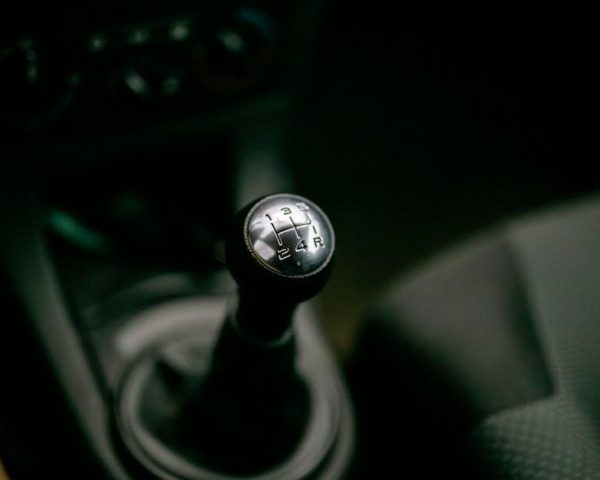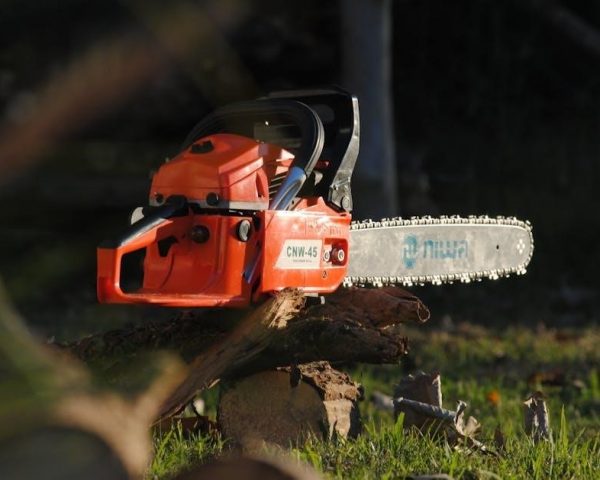The Safety 1st 3-in-1 Car Seat is a versatile and durable solution designed to grow with your child from infancy to youth; It offers rear-facing, forward-facing, and booster modes, ensuring long-term safety and comfort. With easy installation options and a focus on safety standards, this seat provides peace of mind for parents. Its adaptive design accommodates children from 5 to 100 pounds, making it a practical choice for families seeking a single car seat for multiple stages of growth.
1.1 Key Features of the Safety 1st 3-in-1 Car Seat
The Safety 1st 3-in-1 Car Seat boasts a range of innovative features designed for convenience and safety. It includes a LATCH installation system for secure placement, three modes to accommodate growth, and a sturdy harness system. The seat supports children from 5 to 100 pounds, with adjustable headrests and cushioning for comfort. Side impact protection enhances safety, while the easy-to-clean fabric ensures maintenance is hassle-free. Its compact design fits various vehicles, making it a practical choice for families seeking a reliable, long-lasting car seat solution.
1.2 Benefits of Using a 3-in-1 Car Seat
Using a 3-in-1 car seat offers numerous advantages for families. It provides long-term use, adapting to a child’s growth from rear-facing to booster modes, eliminating the need for frequent replacements. This cost-effective solution saves money over time while ensuring consistent safety. The seat’s versatility fits various vehicles, making it ideal for families with multiple cars. Additionally, its easy installation and adjustable features enhance convenience, ensuring a safe and comfortable fit for children as they grow. This makes it a practical and economical choice for parents seeking a reliable car seat.

Installation Instructions
Install the Safety 1st 3-in-1 Car Seat using LATCH or vehicle belts. Ensure proper fit by following the manual and checking vehicle compatibility for secure placement.
2.1 Choosing Between LATCH and Vehicle Belts
Choosing between LATCH and vehicle belts depends on your vehicle and preferences. LATCH (Lower Anchors and Tethers for Children) offers a quick and secure installation, while vehicle belts provide flexibility; LATCH is ideal for vehicles equipped with anchors, ensuring a stable fit. Vehicle belts are better for cars without LATCH or when anchors are unavailable. Always check your vehicle’s manual to confirm compatibility and ensure proper tightening for a safe and secure installation of the Safety 1st 3-in-1 Car Seat;
2.2 Step-by-Step Installation Guide
Place the car seat in the chosen position (rear-facing, forward-facing, or booster) in the vehicle.
Locate the vehicle’s LATCH anchors or decide to use the vehicle’s seat belts.
Attach the LATCH connectors to the anchors or route the vehicle belt through the seat’s belt path.
Tighten the straps or belt until the seat is snug and secure.
Use a locking clip if your vehicle requires it for seat belt installation.
Ensure the car seat is tightly fitted with less than one inch of movement side to side.
Double-check all connections and adjust as needed for a safe and proper fit.

2.3 Securing the Car Seat in the Vehicle
Ensure the car seat is snugly fitted in the vehicle, with no more than one inch of movement side to side or front to back. Position the seat in the back seat, ideally in the center for optimal safety. After installation, check that all straps, LATCH connectors, or vehicle belts are tightly secured. Test the seat by gently rocking it to confirm stability. Always refer to your vehicle’s manual for specific guidance on securing the car seat. Regularly inspect the fit to ensure ongoing safety and proper positioning for your child.

Key Safety Features
The Safety 1st 3-in-1 Car Seat offers advanced safety features, including a robust harness system, energy-absorbing materials, and a secure belt-positioning system. It meets rigorous safety standards, providing reliable protection across all modes. The seat is designed to absorb crash forces, ensuring your child’s safety in various scenarios. Its durable construction and innovative design make it a trusted choice for parents seeking superior protection and comfort for their children.
3.1 Rear-Facing, Forward-Facing, and Booster Modes
The Safety 1st 3-in-1 Car Seat supports three essential modes to accommodate your child’s growth. Rear-facing mode is designed for infants, providing optimal protection for their head and neck. Forward-facing mode is suitable for toddlers who outgrow the rear-facing position but still need a harness. Finally, booster mode offers support for older children until they can safely use a vehicle seatbelt alone. This versatile design ensures your child remains protected and comfortable through every stage of development, from 5 to 100 pounds. Each mode is easy to transition between, offering long-lasting safety and convenience for families. The seat’s adaptability makes it a practical investment for years to come, providing peace of mind as your child grows.
3.2 Harness and Belt-Positioning System
The Safety 1st 3-in-1 Car Seat features a robust harness and belt-positioning system designed to ensure optimal safety and comfort. The harness securely holds your child in place during rear-facing and forward-facing modes, distributing crash forces evenly. The no-rethread harness allows for easy height adjustments as your child grows. In booster mode, the belt-positioning system guides the vehicle’s seatbelt across your child’s body, ensuring proper fit and protection. This system is engineered to provide consistent safety across all three modes, adapting to your child’s needs as they grow. Its intuitive design makes it easy to adjust for a secure fit every time.
3.4 Compliance with Safety Standards
The Safety 1st 3-in-1 Car Seat is rigorously tested to meet or exceed federal safety standards, including FMVSS 213. It undergoes extensive crash testing to ensure protection in various scenarios. The seat is also certified by organizations like the Juvenile Products Manufacturers Association (JPMA). Compliance with these standards ensures the seat’s structural integrity, material quality, and performance in real-world conditions. Regular updates and adherence to safety regulations make this car seat a reliable choice for protecting children across all three modes: rear-facing, forward-facing, and booster. Its certification ensures peace of mind for parents seeking a safe solution.
User Manual Overview
The Safety 1st 3-in-1 Car Seat manual provides detailed guidance on installation, usage, and maintenance. It includes sections on safety precautions and troubleshooting for optimal functionality. Available online as a PDF, the manual ensures easy access to essential information, helping parents use the seat correctly and safely at every stage.
4.1 Navigating the Safety 1st 3-in-1 Car Seat Manual
The manual is organized into clear sections, starting with safety precautions and moving through installation, usage, and maintenance. Easy-to-follow instructions guide parents through each step, ensuring proper use. Troubleshooting tips address common issues, while diagrams and charts provide visual support. The manual emphasizes compliance with safety standards, offering a comprehensive resource for parents to confidently use the car seat across all three modes. Its structured format makes it user-friendly, ensuring essential information is readily accessible. Regular updates are available online for the latest guidelines and safety features.
4.2 Important Safety Precautions
Always read the manual thoroughly before using the car seat. Ensure the manufacturing date on the seat meets or exceeds the manual’s effective date. Follow all guidelines for rear-facing, forward-facing, and booster modes. Never install the seat without proper securing using LATCH or vehicle belts. Regularly inspect for damage or wear. Avoid modifying the seat or using it beyond the weight and height limits. Keep loose items away from the seat to prevent injury. Ensure the child’s harness is snug, and the belt-positioning system is correctly adjusted for their size. Adhere to all safety standards for optimal protection.
Weight and Height Limits
The Safety 1st 3-in-1 Car Seat accommodates children from 5 to 100 pounds, offering rear-facing, forward-facing, and booster modes to suit growing needs. Always adhere to specified limits for each mode to ensure safety and proper fit.
5.1 Rear-Facing Weight and Height Limits
The Safety 1st 3-in-1 Car Seat supports rear-facing use for children weighing 5 to 40 pounds and measuring up to 40 inches tall. Ensure your child’s head remains below the car seat’s top edge when rear-facing. Always verify weight and height limits in the manual, as they are critical for safe usage. Proper harness fit and positioning are essential to maximize protection. Regularly check these limits as your child grows to ensure compliance with safety standards and optimal performance of the car seat.
5.2 Forward-Facing Weight and Height Limits
The Safety 1st 3-in-1 Car Seat supports forward-facing use for children weighing 22 to 65 pounds and measuring up to 52 inches tall. Ensure the child’s head remains below the car seat’s top edge in this mode. The harness should be positioned at or below the child’s shoulders. Always refer to the user manual for precise limits, as they ensure proper fit and safety. Regularly check these limits to guarantee your child remains within the safe usage range for optimal protection and comfort.
5.3 Booster Seat Weight and Height Limits
The Safety 1st 3-in-1 Car Seat in booster mode accommodates children weighing 40 to 100 pounds and measuring 43 to 52 inches tall. The booster elevates the child to fit the vehicle’s seat belt properly. Ensure the lap belt rests across the hips and the shoulder belt crosses the chest. The backless or high-back booster options provide tailored support. Always verify the child’s growth against these limits to ensure safe and correct usage. Regularly check the manual for specific guidelines to maintain compliance with safety standards.

Maintenance and Cleaning
Regularly clean the car seat by washing the removable fabric cover and spot-cleaning stains. Avoid harsh chemicals. Inspect for wear, tear, or damage to ensure safety and durability.
6.1 Cleaning the Car Seat Fabric
To maintain hygiene and appearance, the Safety 1st 3-in-1 Car Seat fabric can be cleaned by removing the cover and washing it in cold water with mild detergent. Gently scrub stains, then rinse thoroughly and air dry. Avoid using bleach or harsh chemicals, as they may damage the material. For tough stains, spot-clean with a soft brush or damp cloth. Regular cleaning ensures the seat remains fresh and safe for your child. Always follow the manual’s specific instructions to preserve the fabric’s quality and safety features.
6.2 Inspecting the Car Seat for Damage
Regularly inspect the Safety 1st 3-in-1 Car Seat for damage to ensure safety. Check for cracks, frayed straps, or loose parts. Examine the seat’s expiration date, usually found on the label, and ensure it’s within the recommended use period. Look for any signs of wear or structural compromise, especially after a crash. Refer to the user manual for specific inspection guidelines. If damage is detected, discontinue use and replace the seat immediately to maintain your child’s safety and protection while traveling.
Troubleshooting Common Issues
Identify and resolve issues like loose harnesses or poor installation. Consult the manual for guidance or contact Safety 1st customer support for assistance.
7.1 Resolving Installation Difficulties
Common installation issues include loose connections or improper belt routing. Ensure the car seat is tightly secured using LATCH or vehicle belts. Check the manual for guidance on tightening straps or adjusting angles. If the seat feels unstable, verify all connections and consult the vehicle’s owner’s manual. For persistent problems, use a locking clip or consider switching between LATCH and belt installation. Always test the seat’s stability by tugging firmly; If issues persist, contact Safety 1st customer support for further assistance.
7.2 Addressing Harness and Belt Fit Problems
If the harness or belt seems too tight or loose, adjust the straps to ensure a snug, proper fit. Loosen the harness, thread the belt correctly, and tighten securely. Ensure the belt-positioning system aligns with your child’s shoulders and hips. Refer to the manual for guidance on adjusting the harness height and tightening the straps; Regularly check the fit as your child grows, ensuring the harness and belts remain properly positioned for optimal safety and comfort. Always test the fit by tugging gently on the straps after adjustment.


